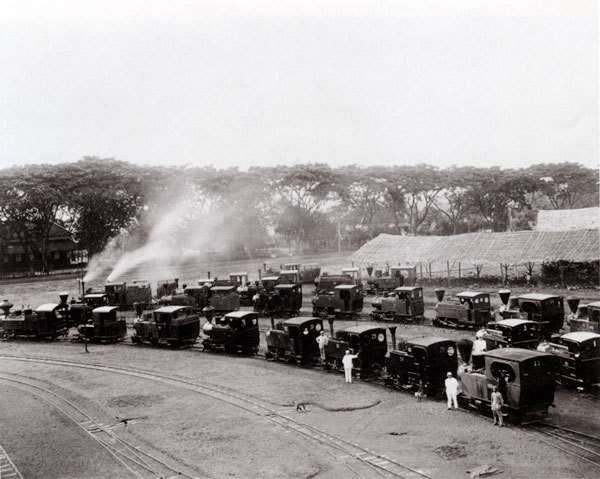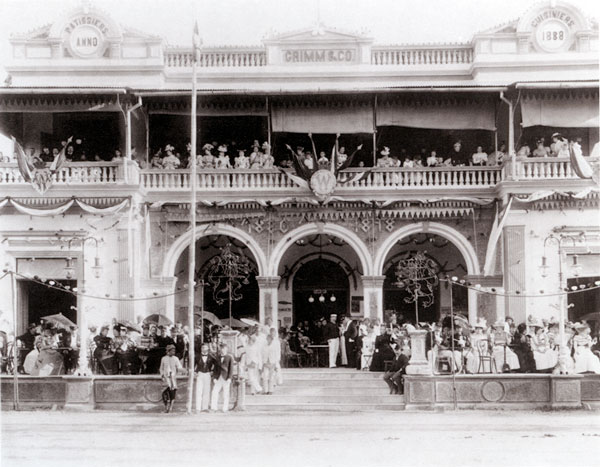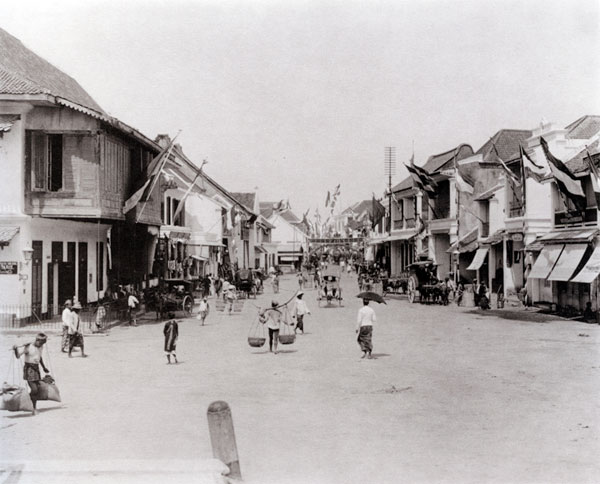 |
Onnes Kurkdjian
Locomotive Park of the Djatinroto II sugar factory, East Java, c.1924 |
Onnes Kurkdjian was born in 1851 in Russia; he died in 1903 in Surabaya, Java. He was a professional photographer who was trained in Tbilisi, Moscow and Vienna, and like many Armenians of the time, he went to the east in search of work. He settled in Surabaya, a port town on the east end of Java, in 1884. From 1890 onwards his name is connected with a photographic atelier that, in its early period, was located at the Bultzingslowenplein.
While Kurkdjian primarily made portrait studies of Europeans in and around Surabaya and of Javanese women, he also photographed tropical forests, trees and volcanos. Kurkdjian's photographic style was characterized by the use of larger-format cameras to produce images of great clarity. In many senses, his work looks like that of the typical professional studio photographer working at the turn of the century. His portraits were printed on a textured matte surface, while views and record photographs were printed on glossy surfaces that were frequently ferrotyped.
Kurkdjian received commissions, but produced work for promotional purposes as well. One such example is the Queen s Album, which was made to commemorate Queen Wilhelmina's visit to Java on August 31, 1898. This album includes views of the parade preparations, the visit itself and much of the pomp and circumstance that surrounded it. The images were mounted into an elaborate and decorative velvet—covered, silver—stamped album that Kurkdjian produced as a presentation piece for the Queen.
In 1897, Kurkdjian took on an English assistant, G. P. Lewis. When he was invited by the Dutch Government to photograph the eruption of the volcano Kelut on June 6,1901 (the initial eruption took place on May 23 of that year), his assistant made the famous photograph of Kurkdjian at work, standing behind his tripod-mounted camera. Because it was so cold in the mountainous area, Kurkdjian was clad as for a European winter. After 1900, Kurkdjian cooperated closely with his associate; the Kurkdjian Atelier changed its name to Kurkdjian, O. & Co. Limited, and moved into new quarters in Surabaya.
After Kurkdjian's death in 1903, G. P. Lewis remained in charge; and, in 1904, the Atelier became a "Company for the Exploitation of the Photographic Atelier Kurkdjian." In 1915, the Company was taken over by the pharmaceutical importers Mieling & Co. Portraits were the primary business of the studio after Kurkdjian's death, but views were also made. During the period from 1914 to 1917, while World War I was raging in Europe, Eastman Kodak Company, of Rochester, New York, became the primary supplier of photographic goods in the archipelago.
While the number of professional photographic studios grew slowly, the use of photographic equipment by amateurs increased exponentially. Atelier Kurkdjian was Kodak's sole agent in East Java, and it thus provided developing, printing and enlarging services for many of the new users.
 |
Onnes Kurkdjian
Ceremonies to welcome Queen Wilhelmina to Java, August 31, 1898. |
 |
Onnes Kurkdjian
Steet scene, Batavia, no date |
 |
Onnes Kurkdjian
Plantation workers sapping liquid rubber, Sumatra, no date |
 |
Onnes Kurkdjian
Volcanic crater of Borneo, East Jave, no date |
| next paper | about Hedi Hinzler
| contents page | asia-pacific photography | photo-web | contacts
|